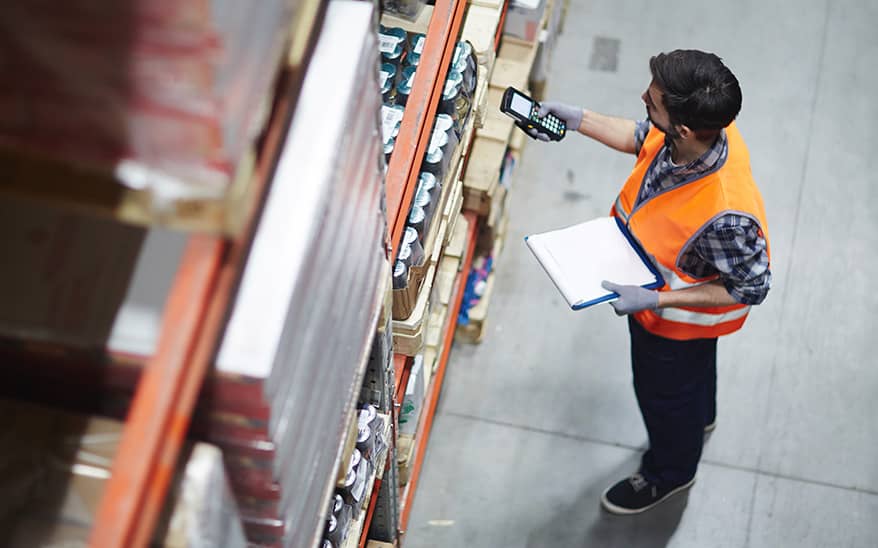Embracing New Technologies And Strategies Key To Resilience And Agility Of Pharma Supply Chains
- 9 June 2021
- By Manhattan Staff

The boom in ecommerce over the last twelve months has touched all industries and as the saying goes, ‘a rising tide is good for all ships’.
While ecommerce has certainly kept many brands and sectors solvent over the last twelve months, it has also presented established business and operating models with a number of challenges along the way; not least in the pharmaceutical industry where the direct to consumer (DTC) boom in over the counter drugs is having a transformative impact on supply chain operations and fulfilment strategies alike.
Pharma goes truly digital
Over the last year we have seen some significant shifts towards end-to-end digitalisation in the pharmaceutical space. When it comes to pharmaceuticals, tracking (from a compliance perspective) and digitisation (from an operational perspective) have reigned supreme for some time now, however the COVID-19 crisis has added a new element to the mix as more and more consumers demand a DTC approach, much as they are now doing in the retail and grocery spaces.
While technology to monitor the integrity and provenance of products, as well as use by dates has always been a priority within pharma and serialisation has become an increasingly important as part of industry-wide effort to combat drug counterfeiting, technology is increasingly influencing the ways consumers expect to be able to purchase and obtain goods – even pharmaceuticals.
While the pandemic has spotlighted ‘trust’ issues around vaccine batches and driven a strong trend toward supply chain risk monitoring and management, it has also been the catalyst for new approaches, in large part due to the overall uptake of ecommerce by all sectors of the population, all over the globe – in particular around the subject of fulfilment strategies.
Investment in digital transformation and innovation is key for all areas within the supply chain and technologies, such as the cloud, robotics and automation will play an important role in being able to meet the challenges of the new fulfilment strategies needed to meet shifting consumer expectations.
Supply chain Agility AND visibility boosted by new technologies
Visibility within the pharma supply chain is about knowing your network and supply base, locating bottlenecks, and having the real-time information at your fingertips to know where your products are at any point in the network; from bottling and labelling, to storing and distribution, right through to (in many cases now), doorstep delivery. It is also key to being able to deliver against developing trends and shifting consumer expectations too – just take the fulfilment of DTC online orders as a prime example.
Take the following applications of these technologies to pharma and you can see how visibility and agility can be improved:
- The Internet of Things (IoT) concerns the vast and ever-growing assortment of connected devices. The rise in IoT innovations enables people to do various tasks differently and provides them with better visibility throughout a process. From a pharmaceutical manufacturing perspective, that increased transparency can keep operations on track and reduce complications. The IoT can also complement other processing improvements.
- IoT sensors can also help pharmaceutical representatives verify that they follow the correct processes to meet regulatory requirements and if a product recall occurs, IoT sensors can confirm where things went wrong providing the insights needed to make quick corrections.
- Another use of IoT in the pharmaceutical world concerns digital twins. These are virtual representations of pieces of equipment, sections of factories, or current processes (such as warehousing and fulfilment). Digital twins that connect to IoT sensors can provide thorough perspectives into operations showing where things are working well or may require improvement.
- Companies from numerous sectors are using big data and analytics software to guide decision-making and track consumer trends and the pharmaceutical industry is no different. The last year has underlined a requirement to strengthen supply chains and make better operational choices and data allows organisations to look at evidence rather than relying primarily on instinct.
- The pharmaceutical sector was not among the earliest adopters of artificial intelligence (AI), the diversity of practical applications makes AI well-suited to various needs that pharmaceutical representatives face. For example, a marketing professional could use AI to predict a patient’s journey and learn which marketing efforts would most effectively convince them to learn more about a medication or ask their doctor to prescribe it for them.
- Historical data also proves valuable for predicting future supply chain disruptions and facilitating better preparedness and can empower the more strategic usage of other solutions. A good example of this over the last four months has been the use of IoT sensors used by many pharmaceutical companies to monitor and control cold-chain supply chains around COVID-19 vaccinations.
As more and more organisations take steps to increase integration across critical operations, leveraging end-to-end tools to ensure continuity of supply, production, distribution, transportation and reverse logistics will be increasingly important as the pharmaceutical industry continues to evolve.
The most successful pharma companies will be those that seize the initiative and build agile, efficient supply chains (either virtual or physical) to support this end-to-end business transparency, recognising that information and visibility are the two prime currencies of future success.
SMALL AND FAST ONLINE ORDER FULFILMENT KEY
Now that many organisations are slowly emerging from the challenges of the last twelve months, new challenges taking centre stage: how can brands prepare for future disruptions? Which processes and systems are needed? What does the warehouse and fulfilment strategy of the future look like and what role do people have to play in it?
The biggest challenge presenting pharmaceutical fulfilment strategies today is how to process online orders that often only consist of one or two pieces.
Most warehouses and B2B2C models business models have been traditionally geared up to work at a pallet or box level, but picking, packing and shipping small orders direct to the consumer (as is the case often with ecommerce) represents an entirely different challenge. Throw into the equation the later and later next day cut-off times that many brands offer online and the challenge just gets steeper.
Gone are the days when warehouses would have three days to process an order. Over the course of 2020 same or next-day shipping has become the default expectation for many consumers and warehouses that do not adjust their processes and fulfilment strategies accordingly to meet this new consume expectation risk becoming obsolete.
Takeaways for a futureproof supplychain
Over the last year we have witnessed first-hand, that the speed with which organisations implement innovation determines the happiness of their direct customers and by proxy their overall success. If the processes and systems within an organisation cannot mirror the speed of change at a macro-economic, customer trending level, an organisation will struggle to maintain its relevance.
While certainly challenging, 2020 accelerated the pace of change across many areas of business too. With supply chains and all their composite parts (fulfilment, warehouses, transportation etc.) now occupying such an important position in board-level thinking. It’s essential that today’s supply chain teams predict where possible what the expectations of tomorrow’s consumers might look like and have the processes, (fulfilment and transportation) and strategies in place to meet them head on.





